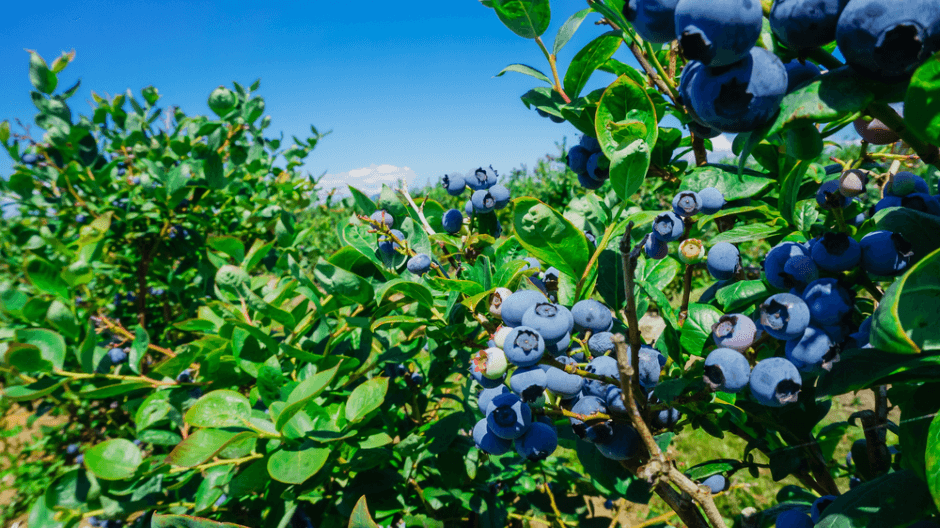Blueberries, with their sweet-tart flavor and numerous health benefits, are a prized fruit in many gardens. They're not only delicious and versatile in a wide range of recipes but are also packed with antioxidants, vitamin C, and fiber. But what many gardeners come to realize is that blueberries have specific soil requirements to truly thrive. The secret? Acidic soil.
This article dives into the world of blueberries and their love for acidic soils. We’ll cover the science behind this need, tips for preparing your soil, and essential care techniques to ensure a bountiful harvest.

Why Acidic Soil?
Every plant species has its own unique pH preference, and blueberries are no exception. Blueberries prefer acidic soil with a pH level between 4.5 and 5.5. This is mainly because:
- Nutrient Availability: In acidic conditions, nutrients like iron, magnesium, and potassium become more available, which are essential for blueberries.
- Enhanced Growth: Blueberries have evolved to thrive in these conditions, promoting better growth and fruit production.
Preparing the Soil
1. Soil Test: Before planting, it's crucial to perform a soil test. This helps you determine your soil's current pH level and amend it accordingly.
2. Amendments: If your soil isn’t acidic enough:
- Sulfur: This is the most common amendment to lower soil pH. Apply according to the product's instructions and the soil test's recommendations.
- Organic Matter: Composted leaves, pine needles, and peat moss are excellent additions. They not only make the soil more acidic but also improve its texture and water retention.
3. Proper Drainage: Blueberries despise “wet feet”. Ensure your planting site has good drainage to prevent root rot.
Planting Blueberries
1. Planting Time: Ideally, plant blueberries in early spring or late fall when the weather is cooler.
2. Spacing: Allow about 4-6 feet between bushes to ensure they have ample space to grow.
3. Depth: The planting hole should be about twice the width of the root ball and the same depth. Ensure the crown (where the stem meets the roots) is just above the soil line.
Caring for Your Blueberries
1. Mulching: Mulch helps retain soil moisture, suppress weeds, and gradually acidify the soil. Use organic mulch like pine bark or pine needles around the base of your plants.
2. Watering: Water consistently, especially during dry spells. However, avoid overwatering.
3. Pruning: In the first few years, focus on shaping the plant and removing any weak or damaged branches. Once mature, prune to allow sunlight into the plant's center and encourage new growth.
4. Fertilizing: Use a fertilizer specifically formulated for acid-loving plants. Always follow label instructions.
5. Protection: Birds love blueberries! As your fruits begin to ripen, consider using bird netting to protect your harvest.
6. pH Monitoring: Regularly test the soil's pH to ensure it remains in the ideal range. Over time, you may need to make additional amendments.
Troubleshooting Common Problems
- Yellowing Leaves: Often a sign of iron deficiency due to soil pH being too high. Amend with sulfur or iron chelates.
- Poor Fruit Set: This could be due to insufficient cross-pollination. Ensure you have at least two different blueberry varieties nearby.
- Reddened Leaves: This may indicate phosphorus deficiency, again linked to pH. Ensure the soil remains at the right acidity level.
Planting and caring for blueberries in acidic soil may seem a bit challenging initially, but the rewards are worth the effort. With some preparation, consistent care, and a little love, you’ll soon be enjoying the fruits of your labor, quite literally! Whether you’re making jams, pies, or eating them straight off the bush, blueberries are a delightful addition to any garden.
The History of Blueberries and Acidic Soil
Blueberries are native to North America and have been thriving in naturally acidic soils for thousands of years. Early Native Americans revered the blueberry for its nutritional value, using it as a staple in their diet, and even as medicine. When European settlers arrived, they quickly adopted the berry into their diets, but it was only in the early 20th century that cultivation really started.
The wild blueberry's love for acidic soil likely stems from the areas they originally thrived in: acidic, sandy, and peat-heavy soils. These soils are commonly found in pine forests, a habitat where blueberries are naturally abundant.
Varieties Suitable for Acidic Soils
While all blueberries prefer acidic soil, certain varieties might be better suited to specific regions or climates:
- Lowbush Blueberries: These are the wild varieties often found in the northeastern parts of North America. They're smaller and spread through underground stems.
- Highbush Blueberries: This type is what most commercial growers cultivate. Varieties include ‘Bluecrop', ‘Blueray', and ‘Jersey'.
- Rabbiteye Blueberries: Native to the southeastern United States, these berries are more tolerant of heat and variable soil conditions.
Deep Dive into Soil Amending
To make your soil conducive for blueberries:
- Compost: Incorporating well-decomposed compost can improve soil structure and slowly adjust pH. It also adds beneficial microorganisms to the soil.
- Iron Sulfate: This can be a faster method of acidifying soil than elemental sulfur. It also provides the plant with iron, which is vital for chlorophyll production.
- Avoid Lime: Lime is used to raise soil pH, so if you're gardening in an area where lime is commonly added, you may want to ensure you're not unintentionally neutralizing your efforts.
Interplanting with Blueberries
Considering blueberries prefer acidic soil, certain companion plants might benefit from these conditions and can be beneficial for the blueberries:
- Azaleas and Rhododendrons: Both thrive in acidic soil and can provide a protective canopy for blueberries.
- Heathers: These ground covers can help keep the soil cool and moist, benefiting the blueberry bushes.
- Camellias: Another acid-loving plant, camellias can provide beauty to your garden while enjoying the same soil conditions as blueberries.
Monitoring and Adjusting Soil Acidity
While it's essential to start with the right pH for blueberries, maintaining it is equally crucial. Investing in a good pH meter can be invaluable. If you notice your soil's pH is drifting towards neutrality, it's easier to make small, regular adjustments than drastic changes later on.
The depth of connection between blueberries and acidic soil goes beyond just a simple preference. It's a relationship honed over millennia, rooted in the very nature of the berry. By understanding and respecting this relationship, gardeners can unlock the full potential of their blueberry plants, reaping heavier yields and more flavorful fruits. In turn, the garden becomes a haven for these delectable berries, and for those fortunate enough to taste the fruits of their labor.


















